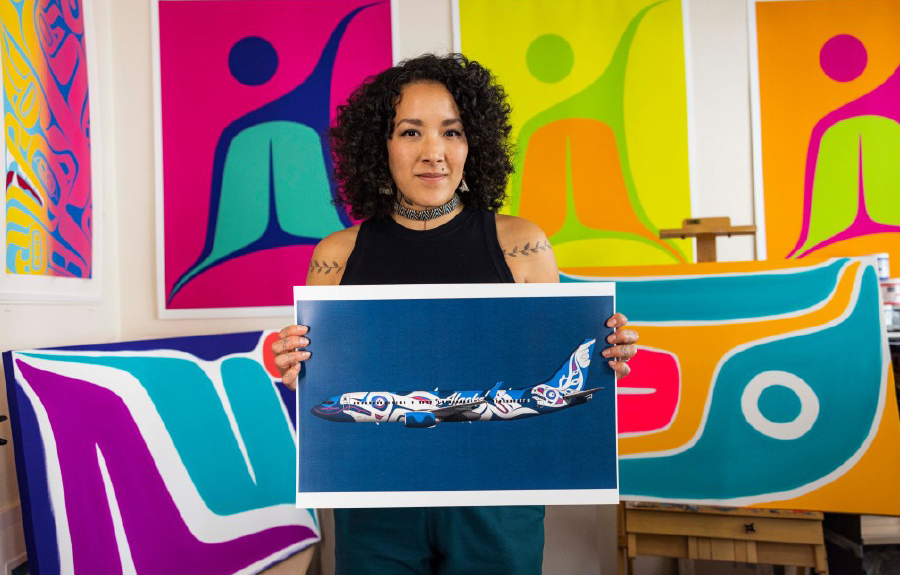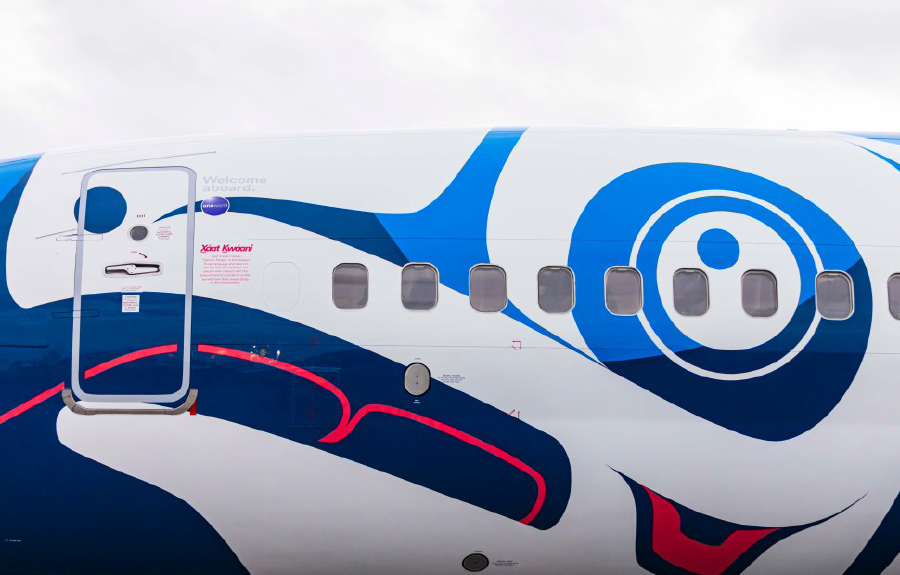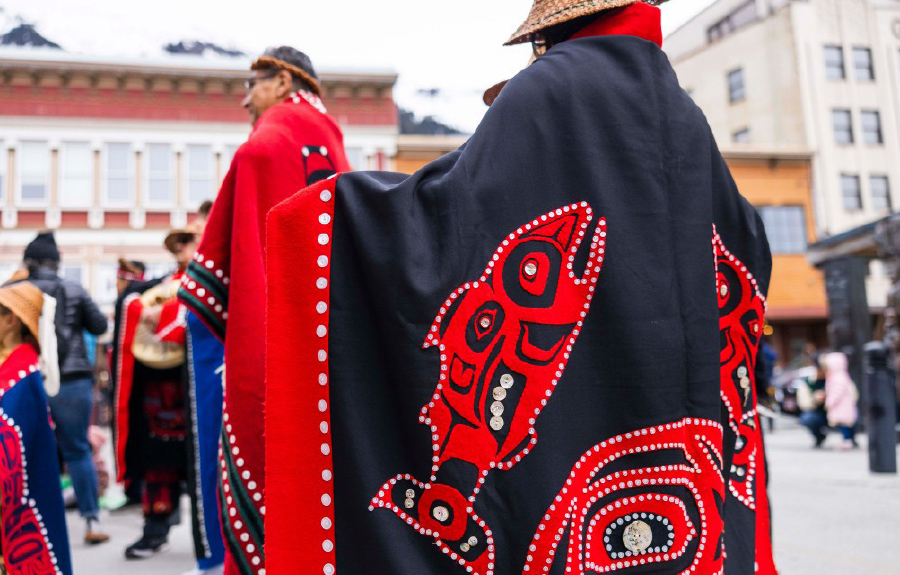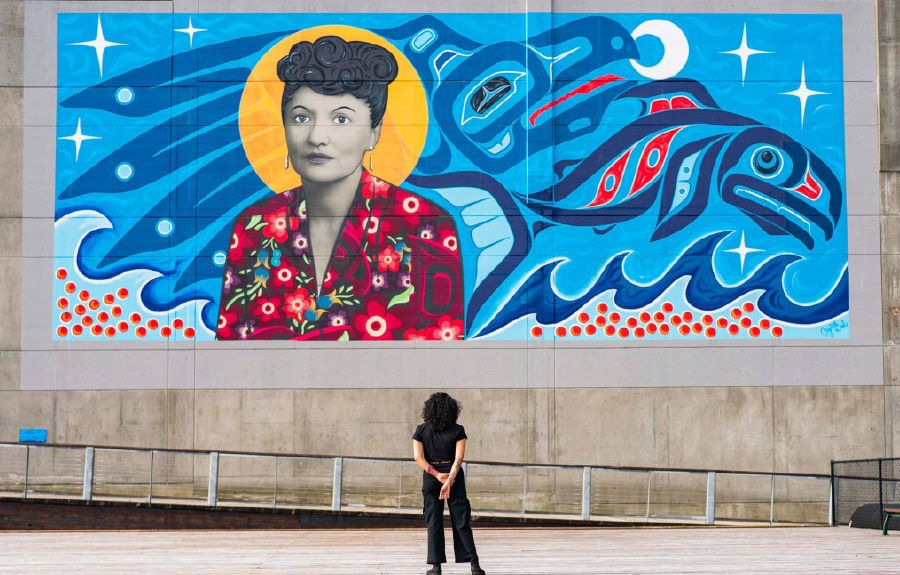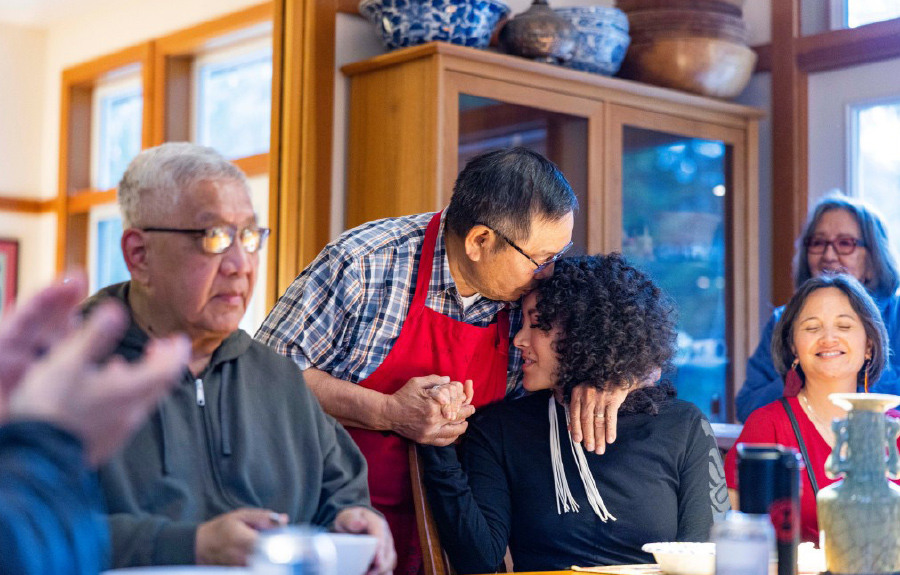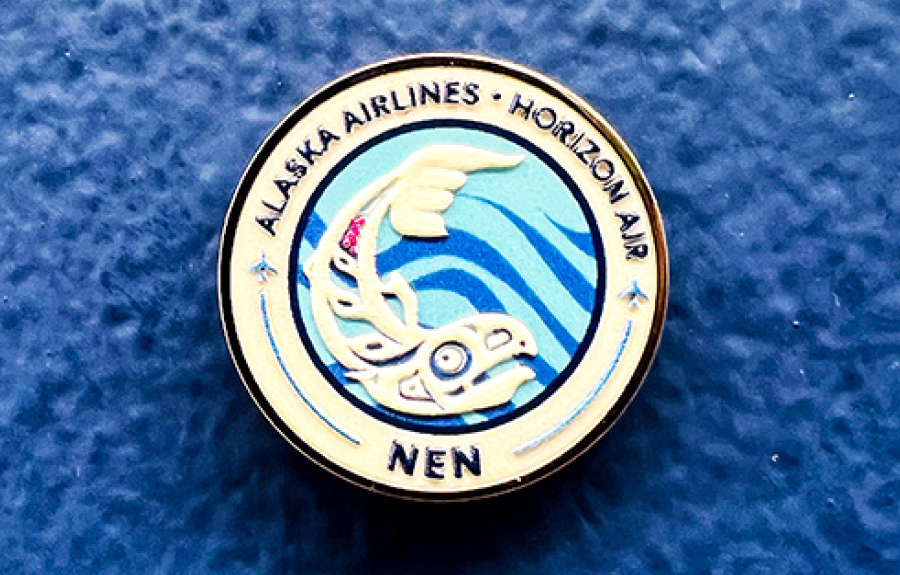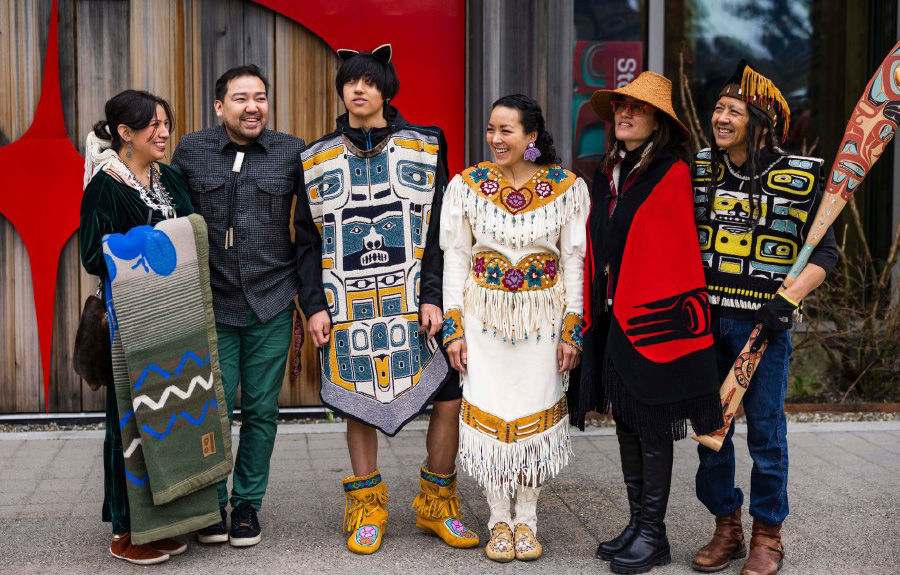

Taking to the skies
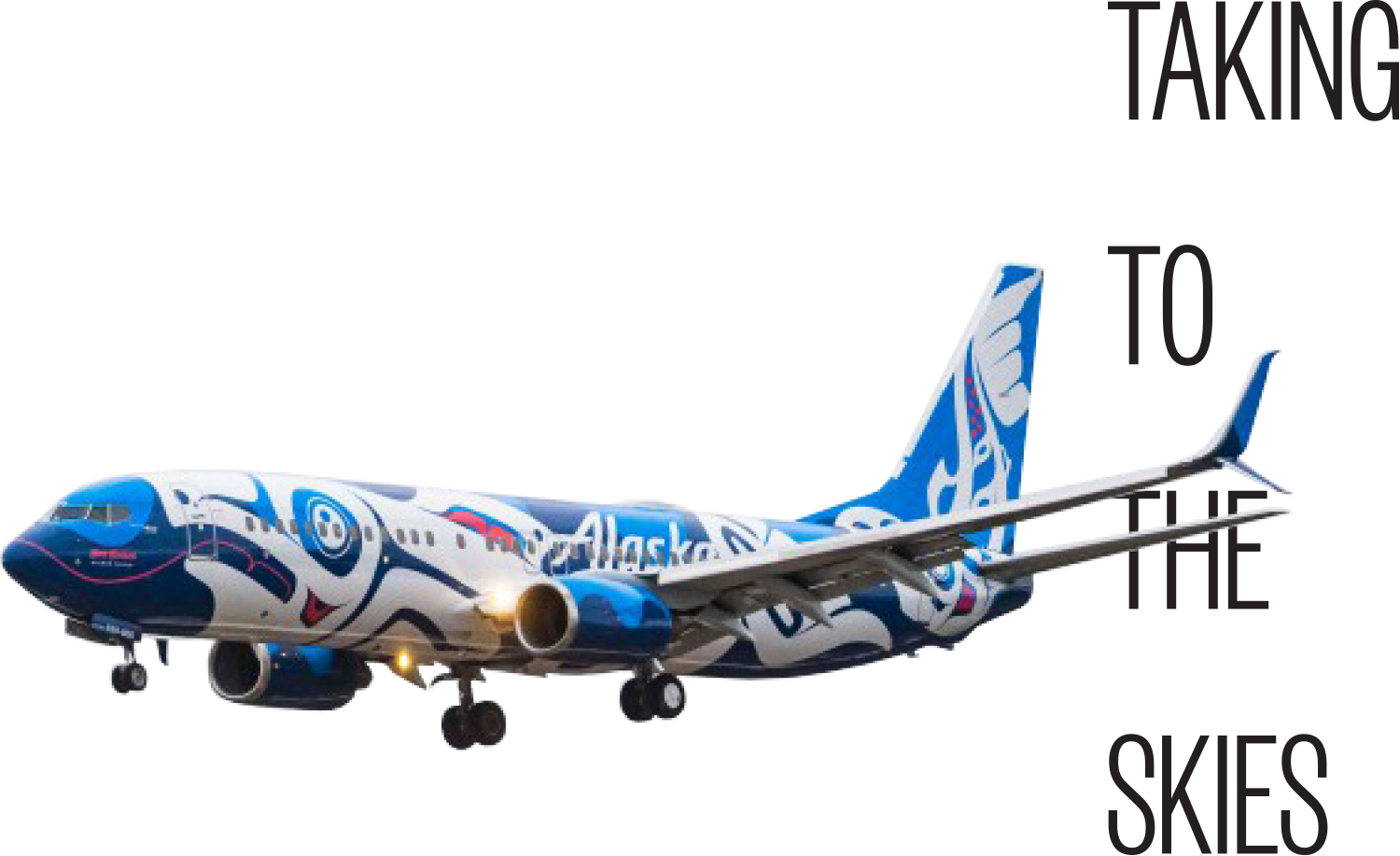
Photos by Ingrid Barrentine
rowing up near the shores of Juneau, Crystal Kaakeeyáa Rose Demientieff Worl was used to seeing Alaska Airlines fly over the mountains into her hometown. She said she dreamed of having her artwork displayed on a plane for years — and [on May 11], that dream became a reality.
“Every time I looked at an Alaska plane, I couldn’t help but visualize the salmon being in formline, or having some sort of design that represents identity. I can’t help but look at things and see how to Indigenize them,” said Crystal.
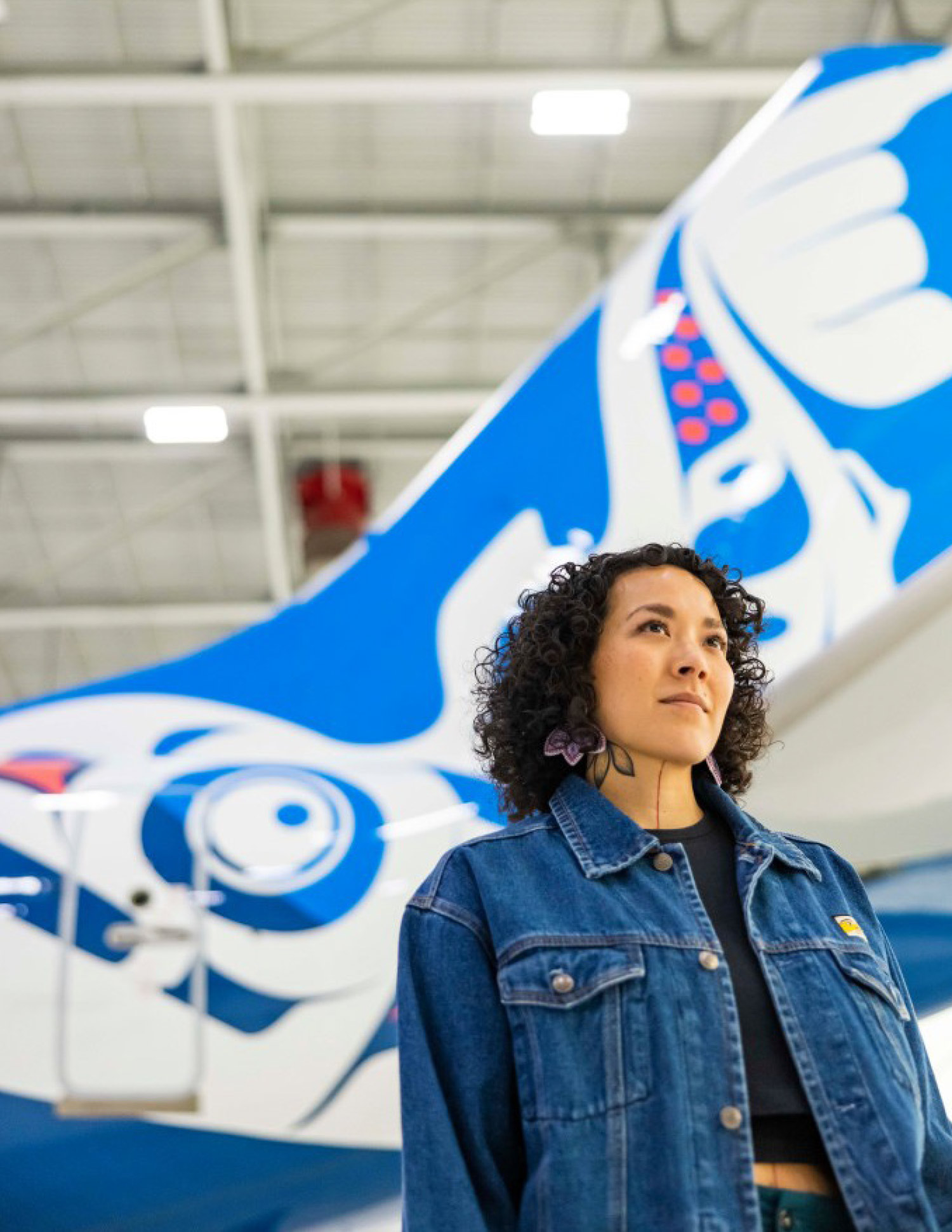
Taking to the skies

Photos by Ingrid Barrentine
rowing up near the shores of Juneau, Crystal Kaakeeyáa Rose Demientieff Worl was used to seeing Alaska Airlines fly over the mountains into her hometown. She said she dreamed of having her artwork displayed on a plane for years — and [on May 11], that dream became a reality.
“Every time I looked at an Alaska plane, I couldn’t help but visualize the salmon being in formline, or having some sort of design that represents identity. I can’t help but look at things and see how to Indigenize them,” said Crystal.
“My heart is so full and warm,” said Crystal. “Every time I create something big or small, it’s the same feeling of just fulfilling this need and wanting to create something and share my story, to stimulate something that’s in me that feels connected. It feels good to say that I live in Juneau and fish and hunt here and eat off this land. My family’s been here for a long time, and I can say my Ancestors are from here, and I’m eating the same food in the same place that they once were, and that’s really special to be able to share that and say that and feel that—and to create and retell their stories through my eyes. It’s powerful.”
Alaska Airlines has always had a profound connection to the state of Alaska—after all, it’s the foundation for becoming the premier West Coast airline they were on May 11. In 1932, Alaska Airlines took their first flight between Anchorage and Bristol Bay, home of the world’s most extensive sockeye salmon run.
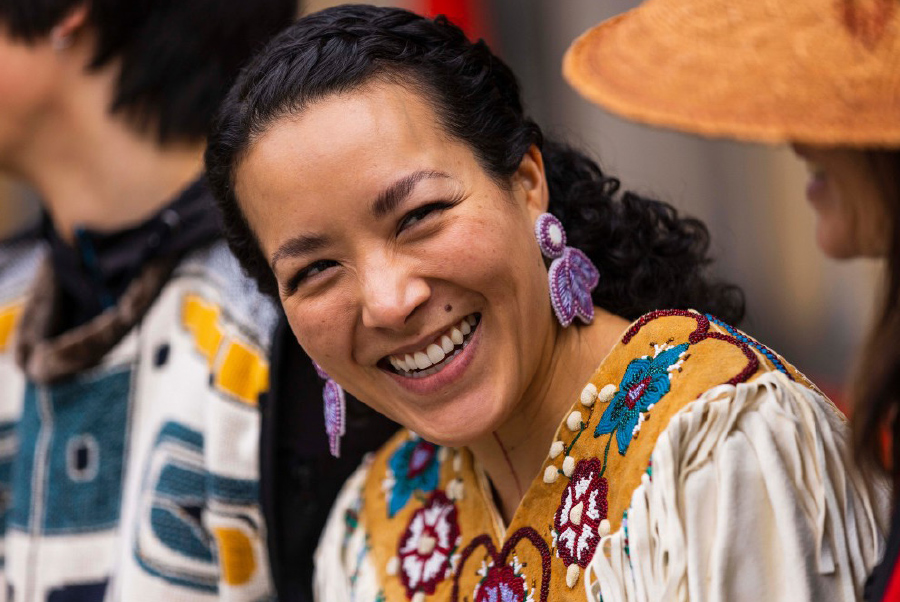

The Alaska Airlines Boeing 737-800 will fly in their fleet for many years throughout their network and enter passenger service on May 12, 2023, with an inaugural flight from Anchorage through Southeast Alaska. The first stop of Flight 62, was through Crystal’s hometown of Juneau, then it continued through Sitka, Ketchikan and Seattle.
Crystal’s expressive designs purposefully blend the old and new. Her work, whether it’s printmaking, painting or public art, recreates and modernizes her Ancestors’ stories and explores the relationships and bonds that her people, the land and the animals share with Alaska so that generations learn its importance through traditional formline design, which dates back thousands of years. She said this aircraft will serve as a gateway to represent Alaska Natives, and she’s incredibly proud.
“When people look at my art, I hope they feel inspired, they feel motivated, but I also want them to know, it’s not easy, it’s challenging,” said Crystal. “There’s a lot of things people don’t see … they see the end piece, which is the outcome of a lot of hard work … a lot of sweat, blood. Every piece I’ve done, that gets bigger and bigger, my life has been building up to it. And I’ve been working really hard to get there.”
A tribute to strength and resilience.
“This will be significant to have Indigenous language on an airplane,” said Crystal. “People will see it, they’ll read it, they’ll try to say ‘Xáat Kwáani’ (Salmon People), and they’ll want to know more and be curious to learn about it and want to feel connected to it. I think that’s significant in terms of the relationship we need to make between our languages that need speakers. So, I’m excited to be part of this.”
During the design process, Crystal worked with people close to her and Alaska Airlines shared the design with employees from their Native Employee Network (NEN) business resource group, and multiple community leaders in Alaska, the Pacific Northwest and the West Coast.
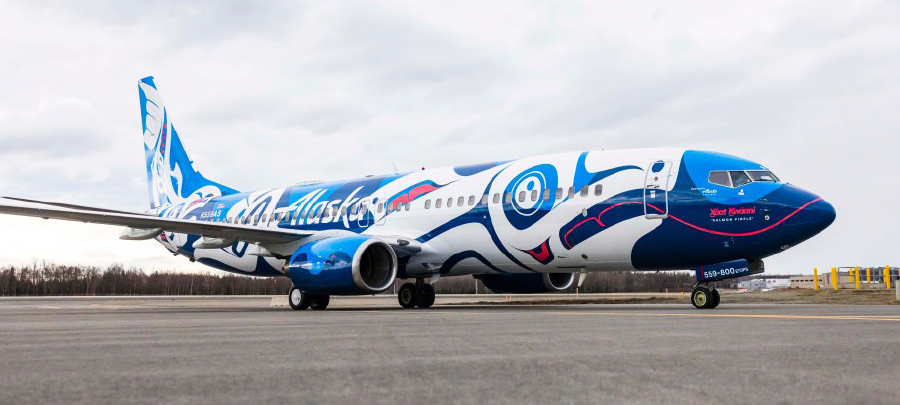
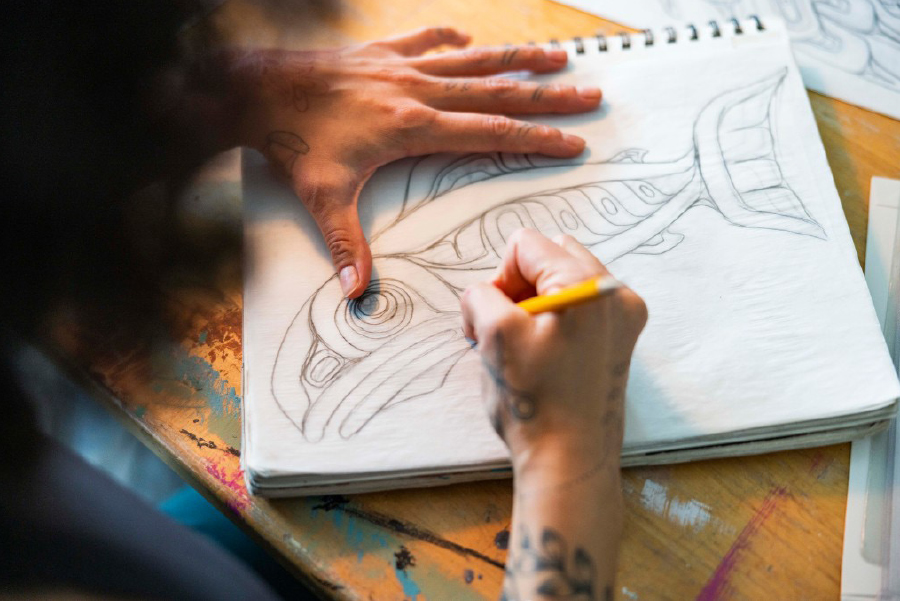
“Having read about Crystal, seen her murals in Juneau and Anchorage and knowing her love of monumental art, she came to mind when we had the opportunity to paint a very large canvas—a 737-800,” said Marilyn Romano, regional vice president in Alaska. “Only this time, instead of remaining stationary and having viewers come to the art, we will take the art everywhere this plane flies, inviting guests to learn more about Alaska Native and Native American history, art, culture and language.”
Talk about kismet: In 2020, Crystal and her friends tagged @alaskaair on Instagram with the caption: “Are you ready for me @alaskaair?? I’m ready for you.” She said she had been manifesting the idea to create a plane for Alaska … and three years later, here it is.
— Sealaska and Sealaska Heritage Institute
“For me, this plane is confirmation that the art, language and culture that our Ancestors practiced and hoped to pass on to future generations is not only alive and well but is thriving. It is a statement for all Indigenous people that we are still here.”
— Dawn Smith, Tsimshian, clan is wolf. Co-Chair, Native Employee Network Alaska Airlines
“Alaska has always been, and will always be, a Native place with deep, rich cultural heritages. For too long, Alaska has been viewed primarily through a geographical lens, when it is the many Indigenous cultures and peoples that truly make our state unique. We honor and appreciate Alaska Airlines’ commitment to ensuring that from the moment someone sets foot on this airplane, they will have an opportunity to learn about Alaska’s First Peoples, who have inhabited Alaska since time immemorial.”
— Emily Edenshaw President and CEO, Alaska Native Heritage Center
Crystal has high hopes that this aircraft will encourage people to learn and embrace Indigenous culture, values—and to do our part to make the world a better place for the salmon.
“Salmon are perhaps probably the strongest beings on earth,” she said. “We have a great amount of respect for salmon because they’re feeding my family, clan members, community members, and Alaskans. The nutrients in their bodies feed our people, this community. It’s how our Tongass rainforest is so lush and how our animals are so big and strong. Their muscles feed our muscles and stimulate so many facets of our existence and have for thousands of years—I just hope that will remain for the next generations.”
